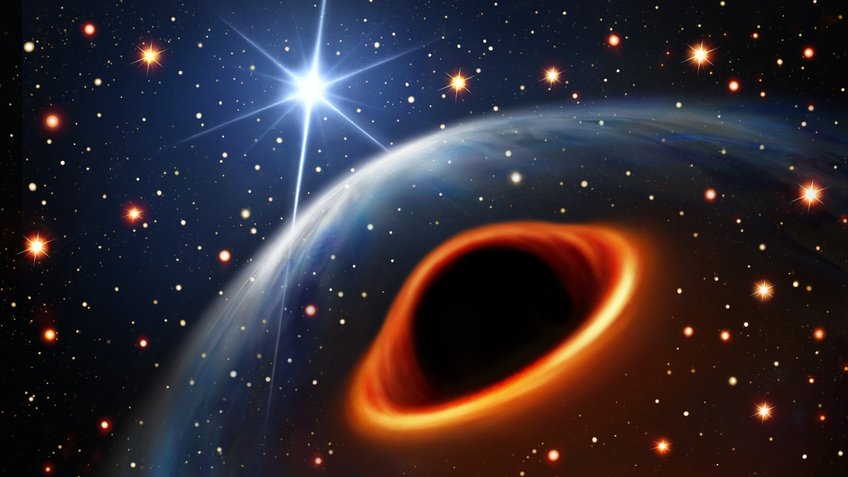2024-01-18 マックス・プランク研究所

An artist’s impression of the newly discovered system, assuming that the massive companion of the radio pulsar (bright blue star in the background) is a black hole (foreground). Both objects are 8 million kilometres apart and orbit each other every 7 days. © MPIfR; Daniëlle Futselaar (artsource.nl)
◆これがブラックホールか中性子星かは不明で、ブラックホール質量ギャップに位置する。これにより、宇宙の極端な条件で物質の性質を探るユニークな実験室が提供された。
<関連情報>
- https://www.mpg.de/21385526/0115-radi-lightest-black-hole-or-heaviest-neutron-star-150300-x
- https://www.science.org/doi/10.1126/science.adg3005
中性子星とブラックホールの質量差にあるコンパクトな天体との連星パルサー A pulsar in a binary with a compact object in the mass gap between neutron stars and black holes
EWAN D. BARR, ARUNIMA DUTTA, PAULO C. C. FREIRE, MARIO CADELANO, […], AND ANDREA POSSENT
Science Published:18 Jan 2024
DOI:https://doi.org/10.1126/science.adg3005
Editor’s summary
There is a substantial gap between the masses of the heaviest measured neutron star and the lightest measured black hole. This mass gap carries information about how both types of object form during supernovae (see the Perspective by Fishbach). Barr et al. used pulsar timing to investigate a binary system in a dense star cluster. They found that the pulsar’s binary companion is an object in the mass gap, but could not determine whether it is an unusually high-mass neutron star or an unusually low-mass black hole. Either way, the authors argue that it formed by the earlier merger of two other neutron stars. —Keith T. Smith
Abstract
Some compact objects observed in gravitational wave events have masses in the gap between known neutron stars (NSs) and black holes (BHs). The nature of these mass gap objects is unknown, as is the formation of their host binary systems. We report pulsar timing observations made with the Karoo Array Telescope (MeerKAT) of PSR J0514−4002E, an eccentric binary millisecond pulsar in the globular cluster NGC 1851. We found a total binary mass of 3.887 ± 0.004 solar masses (M⊙), and multiwavelength observations show that the pulsar’s binary companion is also a compact object. The companion’s mass (2.09 to 2.71 M⊙, 95% confidence interval) is in the mass gap, indicating either a very massive NS or a low-mass BH. We propose that the companion formed in a merger between two earlier NSs.



